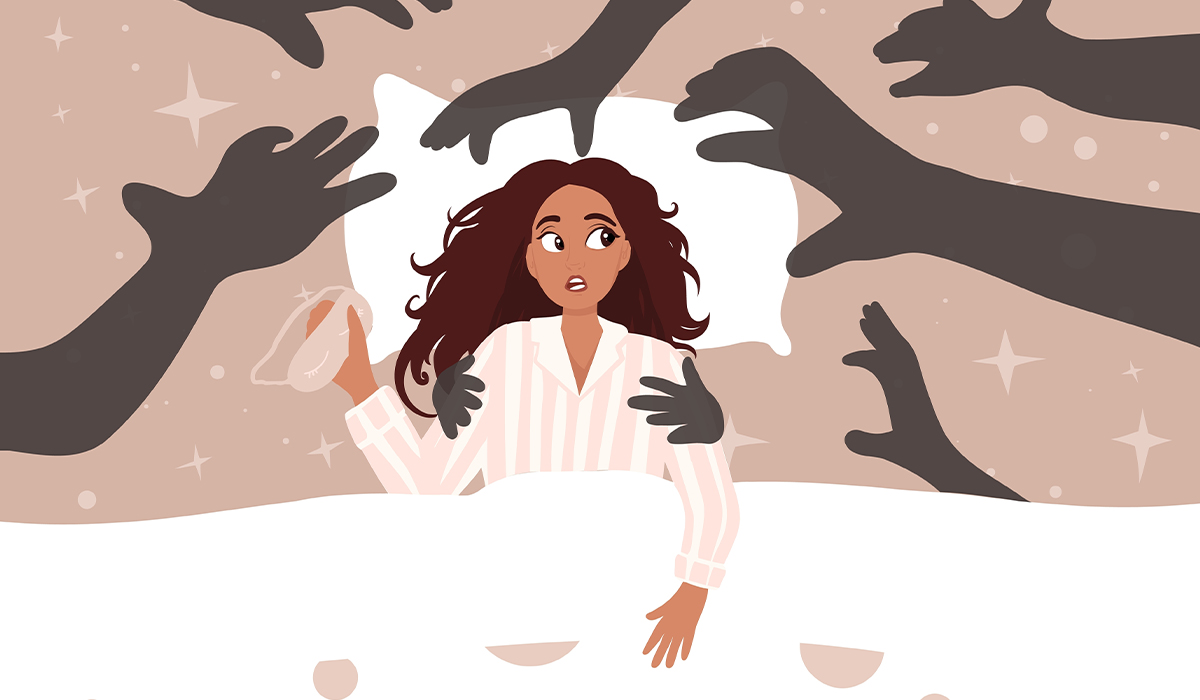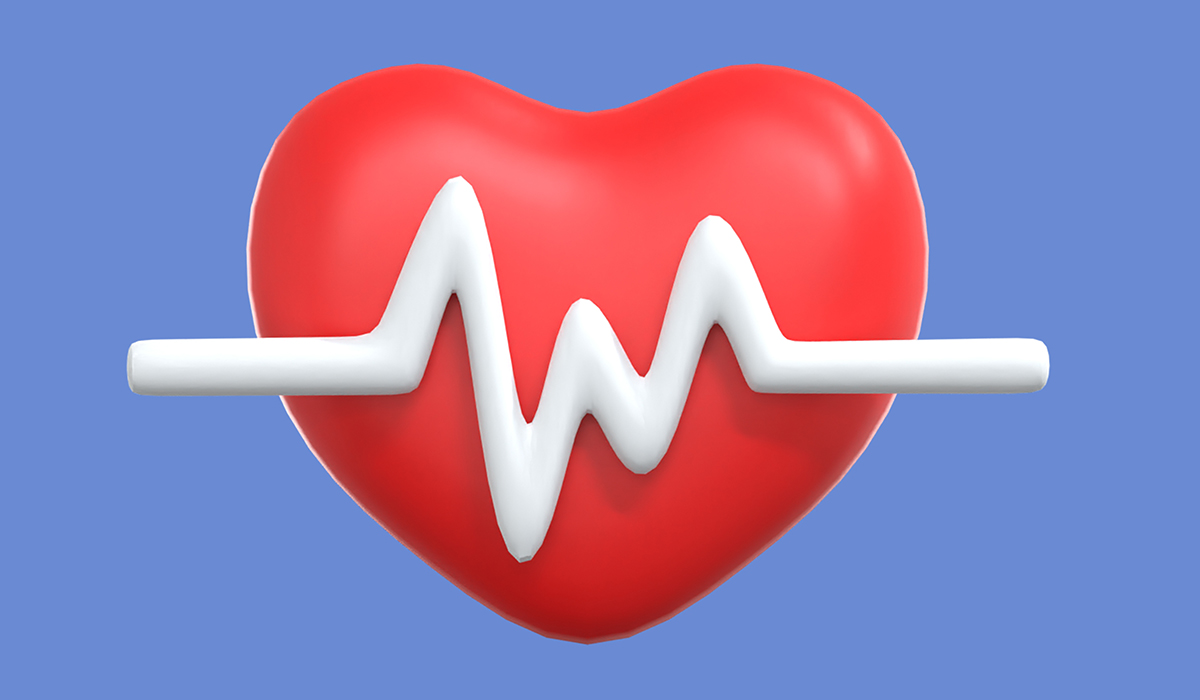REM is an abbreviation for rapid eye movement. That means that during the REM sleep phase, our eyes move faster under closed eyelids. It is entirely normal.
Everybody knows that sleep is a fundamental biological need of the body, without which a person cannot function properly. To feel good, you need to sleep enough. Contrary to popular belief, sleep is not a passive condition in which the brain turns off and rests.
During sleep, the characteristic posture of rest, cessation of motor activity, loss of conscious contact with the environment, and reduced reactivity to external stimuli occur. However, the nervous system activity is preserved and is subject to constant cyclical changes. Another significant feature of sleep is its reversibility, i.e., the ability to return to the waking state under adequate external stimuli.
Normal sleep consists of 4 phases of sleep – 3 NREM phases (N1 – light sleep, N2 – a state between light and deep sleep, N3 – deep sleep), and the mentioned REM sleep phase.

Probably because it is mainly in this phase that dreams![]() occur, and we, in a sense, experience them (however, we now know that we can also dream in other phases of sleep, not only in REM). Therefore, the brain is very stimulated, and breathing and heart rate are not slowed. During the REM sleep phase
occur, and we, in a sense, experience them (however, we now know that we can also dream in other phases of sleep, not only in REM). Therefore, the brain is very stimulated, and breathing and heart rate are not slowed. During the REM sleep phase![]() , muscle paralysis occurs (except for the heart, breathing, and eyeballs). It prevents our body from recreating sleep. If muscle paralysis did not occur during the REM sleep phase, our body would probably be very active, which could cause harm to ourselves or other people.
, muscle paralysis occurs (except for the heart, breathing, and eyeballs). It prevents our body from recreating sleep. If muscle paralysis did not occur during the REM sleep phase, our body would probably be very active, which could cause harm to ourselves or other people.
The eyes move![]() in all directions, but our body is completely paralyzed because, during this phase, there is no adrenaline secretion. A hormone associated with action, fear, and anxiety. Dreams are more realistic and full of details. During such a dream, emotional reactions to events are unlearned.
in all directions, but our body is completely paralyzed because, during this phase, there is no adrenaline secretion. A hormone associated with action, fear, and anxiety. Dreams are more realistic and full of details. During such a dream, emotional reactions to events are unlearned.
The advantage is that we are completely isolated from these emotions in such a dream because the hormones associated with them are not produced. You may even remember that you deal with something much more calmly while you sleep. Nightmares may be an exception, but they are most likely to occur during light sleep, not REM sleep.
If you only sleep during the first half of the night, wake up regularly, or even cannot sleep at all, this is a big problem for your mental health. Whatever the reason, if you're not in REM sleep long enough, you'll notice it right away in the morning. And maybe even though you slept, you feel tired. Worse still, due to lack of deep sleep, we are emotionally irritable during the day.
Sleep plays a significant role in regulating emotions![]() and processing traumatic experiences. REM sleep helps you wean yourself from intense emotional reactions. When we don't sleep well, we look at things around us much more critically, and the world becomes darker than on days when we're adequately rested. It's important to realize that even if you sleep through the night, your sleep doesn't have to be high quality.
and processing traumatic experiences. REM sleep helps you wean yourself from intense emotional reactions. When we don't sleep well, we look at things around us much more critically, and the world becomes darker than on days when we're adequately rested. It's important to realize that even if you sleep through the night, your sleep doesn't have to be high quality.
During REM sleep, our brain creates connections and strengthens the meanings of the events we experience during the day. This process is crucial for emotional and cognitive functioning because it helps us understand which experiences and connections are relevant and which are not. Lack of REM sleep can lead to strange associations and may even lead to hallucinations, which proves the importance of this phase of sleep for our brain.
To sum up, REM sleep is mainly responsible for dreams, but in addition:
Sleep in the REM phase begins only 60-90 minutes after falling asleep, and most occur in the second phase of sleep (in the first few hours, we have more of the deep sleep phase N3). Therefore, the REM sleep phase will suffer the most if we get up earlier than usual.
Is REM sleep deep sleep? Generally, stage N3![]() is considered deep sleep. The REM phase is certainly not light sleep, but it cannot be classified as typical deep sleep either because it is easier to wake up from it than when we are in the deep sleep phase. REM sleep is a different phase of sleep that has its classification.
is considered deep sleep. The REM phase is certainly not light sleep, but it cannot be classified as typical deep sleep either because it is easier to wake up from it than when we are in the deep sleep phase. REM sleep is a different phase of sleep that has its classification.
REM sleep is paradoxical sleep. It was named so because of the specific characteristics of the brain waves that dominate it. They are perfectly synchronized and swift. They generate low electrical voltage.
On the other hand, it is worth knowing that the zone that is believed to be responsible for regulating this extremely inspiring phase of sleep is the brain stem. Cortical and thalamic neurons are more intensely depolarized at this stage. There is also another type of neurotransmitter here, called acetylcholine.
Here are some of the changes![]() that happen when we enter the REM sleep stage:
that happen when we enter the REM sleep stage:
To better understand how the REM phase works and occurs, we will look at the individual stages of sleep.
In this first sleep phase, you may wake up and feel like you are falling. The muscles relax, and alpha and theta brain waves gradually take over the brain. Sleep becomes slightly deeper, heart rate decreases, and body temperature decreases. It is when the body prepares to enter the most significant sleep phases.
At this stage, the sleep becomes very deep. Delta brain waves are dominant, and various types of sleep disorders may occur, such as nightmares or episodes of sleepwalking.
During the stage of sleep called NON-REM, the body undergoes regeneration. Tissue elements and dead cells are removed, and the immune system is cleansed. In children, the development of muscles and bones is additionally stimulated.

After about 80-100 minutes![]() , our brain finally reaches the REM phase. Brain waves take on the same activity and intensity as if we were awake. Our dreams are more vivid, and we confuse them with reality. The body completely relaxes the muscles. Theta brain waves predominate, and the brain integrates the collected data into long-term memory.
, our brain finally reaches the REM phase. Brain waves take on the same activity and intensity as if we were awake. Our dreams are more vivid, and we confuse them with reality. The body completely relaxes the muscles. Theta brain waves predominate, and the brain integrates the collected data into long-term memory.
The sleep cycle we have described is repeated several times each night, four to five times. In each subsequent cycle, the REM phase will also last longer than the previous ones. Another variant is up to two hours if we are under 30 and up to half an hour if we are over 65.
As you can easily see, ensuring proper sleep quality is essential to be full of energy and regenerate our strength. Correct sleeping habits that allow us to achieve the REM phase are the key to taking care of our cognitive processes, memory, and ability to focus, perceive, and respond to stimuli our brain receives every day effectively.
Sleep is an essential part of our lives. While each phase influences the regeneration process, the REM phase is particularly essential for the body, like deep sleep, and fulfills several critical functions. The proper quality of the REM stage and sleep affects, e.g., accurate processing of emotions, healthy brain development, and accurate memory.
The REM phase is a stage of sleep that is mainly associated with the occurrence of unmistakable and characteristic dreams. However, it is significant to remember that dreams do not only occur during REM time. It is also a characteristic of deep sleep when various types of nightmares, fears, and anxieties are most often visible.
REM plays a fundamental role in processing and managing emotions. At this stage, the body deals with feelings and remembers emotionally charged events. The amygdala in the brain is responsible for the intensity of emotions and their perception. This structure works during the REM phase, and the quality of this sleep phase determines our feelings about a given event after waking up.
The amount of sleep and the quality of the REM stage are also necessary for memory and knowledge. In this sleep phase, our brains process new information, data, and motor skills acquired daily. The brain then decides which messages to keep and which to delete. In the process of learning new skills, it is necessary to sleep for the appropriate number of hours a day. Lack of sleep, persistent insomnia, or constant daytime sleepiness can hinder acquiring new skills. It turns out that even a nap lasting about 20 minutes can help you remember specific muscle activities or new knowledge.
REM sleep is also crucial for brain development in children, especially newborns. It turns out that this stage lasts much longer in them than in adults. This stage of sleep is responsible for the neural stimulation that leads to the development of a mature brain structure.
The duration of the REM phase increases as the night goes on. It is related to the gradual preparation of the body for waking up. Increasing brain activity is expected to make returning to reality easier and much less radical.
A sleep disorder![]() in which the physically ill person acts out vivid, often unpleasant dreams by screaming, talking, and violently moving their arms and legs during REM sleep. The onset of REM sleep behavior disorder is usually gradual and may worsen over time. The disorder may be associated with other neurological conditions such as dementia with Lewy bodies, Parkinson's disease, or multiple system atrophy.
in which the physically ill person acts out vivid, often unpleasant dreams by screaming, talking, and violently moving their arms and legs during REM sleep. The onset of REM sleep behavior disorder is usually gradual and may worsen over time. The disorder may be associated with other neurological conditions such as dementia with Lewy bodies, Parkinson's disease, or multiple system atrophy.

According to the two-factor model of sleep regulation![]() , sleep is shaped by two main processes: homeostatic sleep demand
, sleep is shaped by two main processes: homeostatic sleep demand![]() and circadian rhythm
and circadian rhythm![]() . The statement that a given biological process is homeostatic means that it is a process that restores the body's balance, i.e., homeostasis. During wakefulness, various metabolites and substances accumulate in the brain, making us increasingly tired, inattentive, and sleepy. Reversing these processes is one of the main functions of sleep.
. The statement that a given biological process is homeostatic means that it is a process that restores the body's balance, i.e., homeostasis. During wakefulness, various metabolites and substances accumulate in the brain, making us increasingly tired, inattentive, and sleepy. Reversing these processes is one of the main functions of sleep.
The homeostatic process has a more powerful influence on the need for sleep; the shorter the sleep last night, the longer the time has passed since the last sleep period, i.e., the longer the period of wakefulness, and the greater the physical activity during the day.
The homeostatic demand for sleep is responsible not only for its length but also its depth. The larger it is, the deeper the sleep becomes. People with severe sleep deficiency often sleep so deeply that they do not respond to any external stimuli, and we colloquially say that they “slept like a rock.” In the last century, we have observed a change in human lifestyle.
The low level of physical activity during the day related to the everyday use of various types of machines and devices at work and in households, as well as moving almost exclusively by mechanical means of transport, means that in many individuals, the homeostatic process in the evening is not strong enough to cause long-lasting and deep sleep. Therefore, to sleep healthily, it becomes necessary to practice sports regularly.
The circadian rhythm tells the body the right time to sleep, which physiologically should be during the dark period. The most important factor shaping the circadian rhythm is light. Light stimuli falling on the retina of the eyeballs affect the activity of the anterior hypothalamus, the so-called suprachiasmatic nuclei. It is a structure in the human brain responsible for synchronizing all the body's circadian systems.
The latter influences, among others, the secretion of melatonin![]() – a hormone whose primary physiological function is to indicate the body's period of darkness. They also regulate the secretion of many hormones and the activity level of the central nervous system. In this way, through the suprachiasmatic nuclei, the light rhythm synchronizes the functioning of the entire organism according to the 24-hour rhythm of the day.
– a hormone whose primary physiological function is to indicate the body's period of darkness. They also regulate the secretion of many hormones and the activity level of the central nervous system. In this way, through the suprachiasmatic nuclei, the light rhythm synchronizes the functioning of the entire organism according to the 24-hour rhythm of the day.
In addition to light, other factors also play an essential role in regulating the circadian rhythm. These include:
The departure from the natural lifestyle associated with the rhythm of day and night, thanks to artificial lighting, has resulted in the fact that, apart from the disturbed homeostatic process, many people also experience destabilization or weakening of the circadian rhythm. For this reason, sleep disorders are currently among the most common health ailments of the population, and the need to study and treat them has led to the creation of a new branch of medicine, which we call somnology, or sleep medicine.
Table of Contents

Narcolepsy is a disease of sudden, involuntary sleep attacks during the day. What are the other symptoms of the disease?… read more »

Sleep paralysis is a condition in which you experience a feeling of inertia of the entire body. What are the… read more »

Insomnia is characterized by insufficient duration or unsatisfactory quality of sleep. The problem can take many forms. What are its… read more »

Don't let sleep disorders take away your enjoyment of life. Find out if you have symptoms of sleep apnea. Learn… read more »

The Dukan Diet is high-protein and consists of four stages. What is it about? What are the health benefits? Can… read more »

Cardiac arrhythmia is a disease characterized by irregular heartbeats. What are the causes of this disorder? What is the diagnosis… read more »

Alopecia is a disease that manifests itself in various ways, including thinning or loss of hair. What are the causes… read more »

Brain tumors are abnormal growths located in the brain. It can be malignant or benign. Symptoms and treatment depend on… read more »

Living with Lewy body dementia can be difficult. However, proper diagnosis, treatment and care can greatly improve a patient's quality… read more »